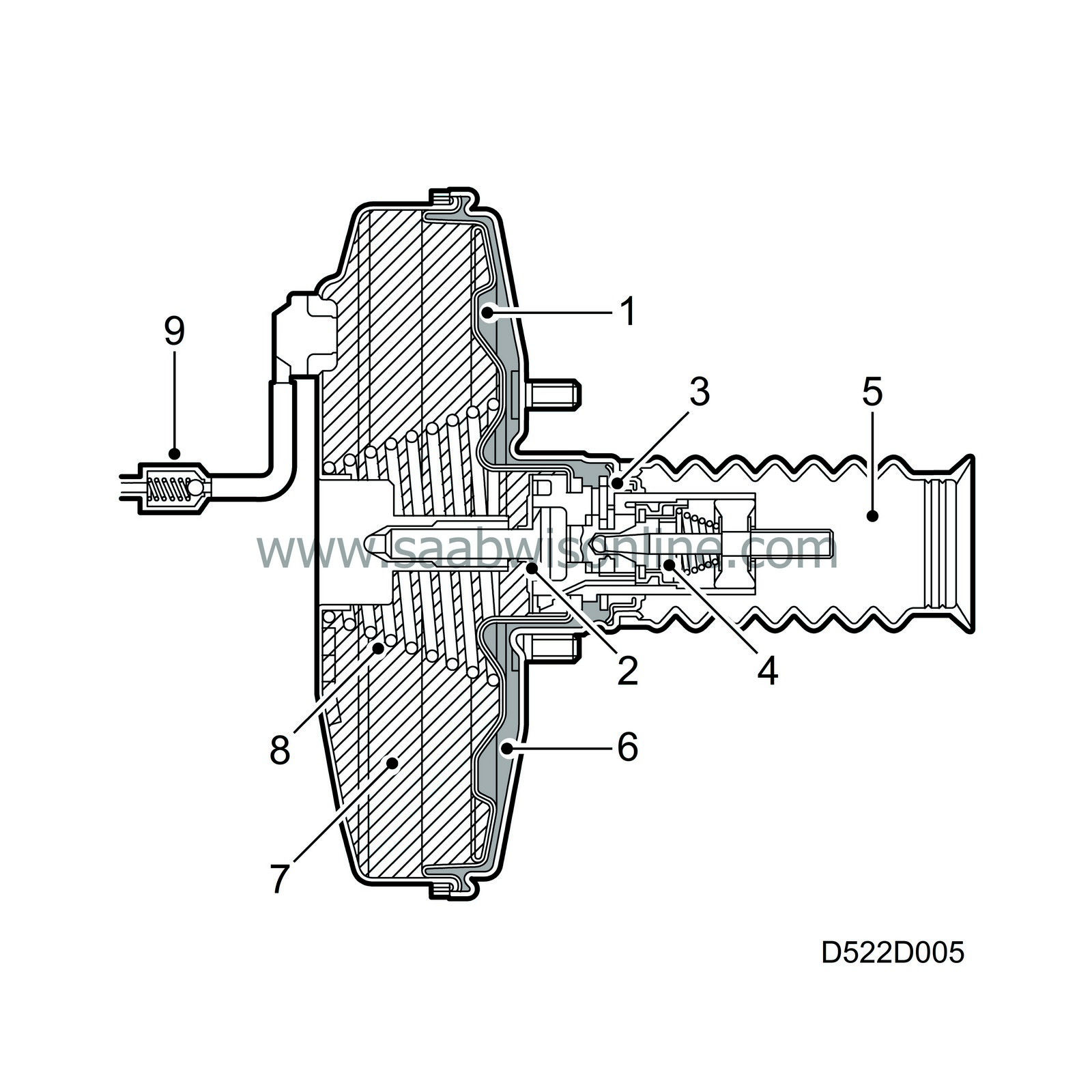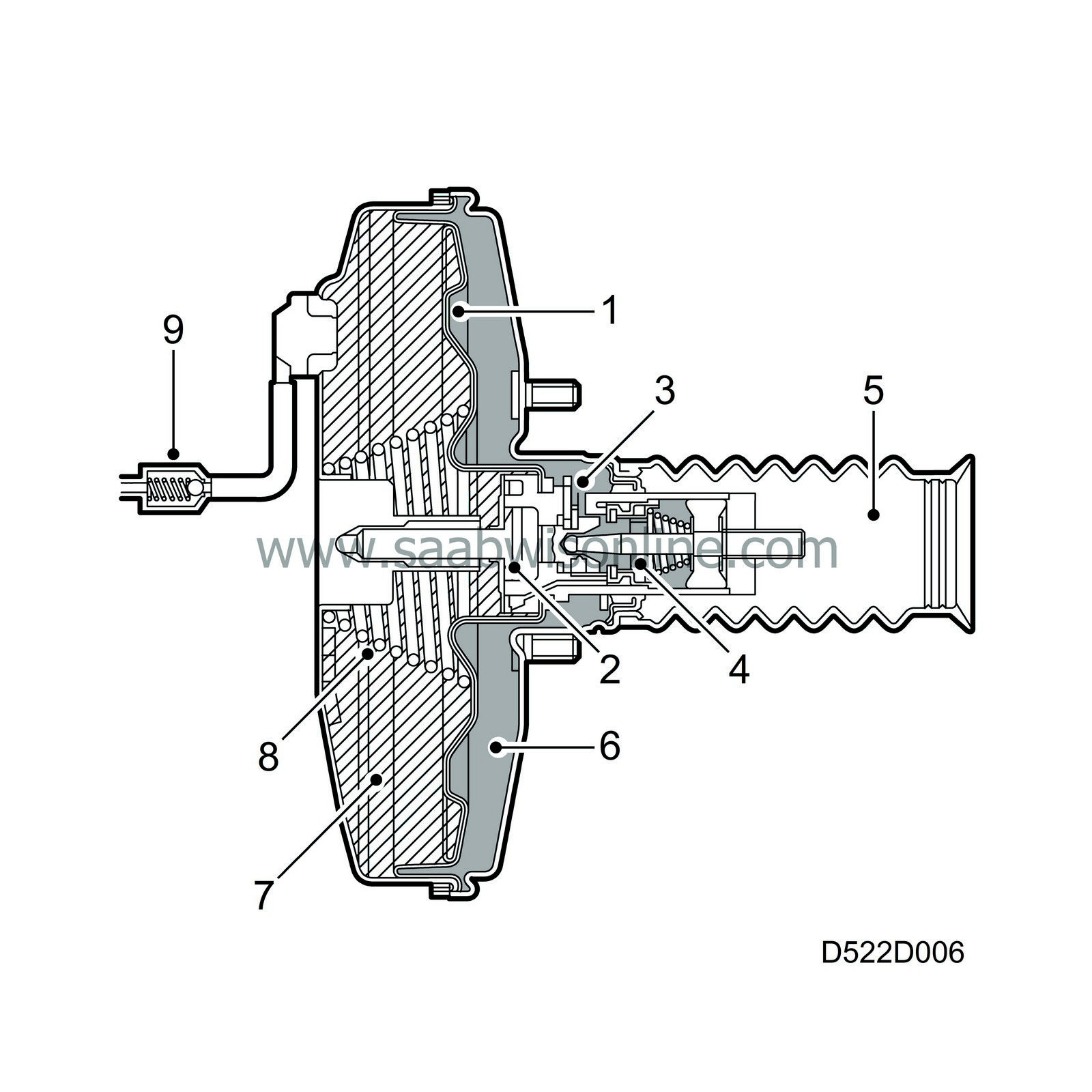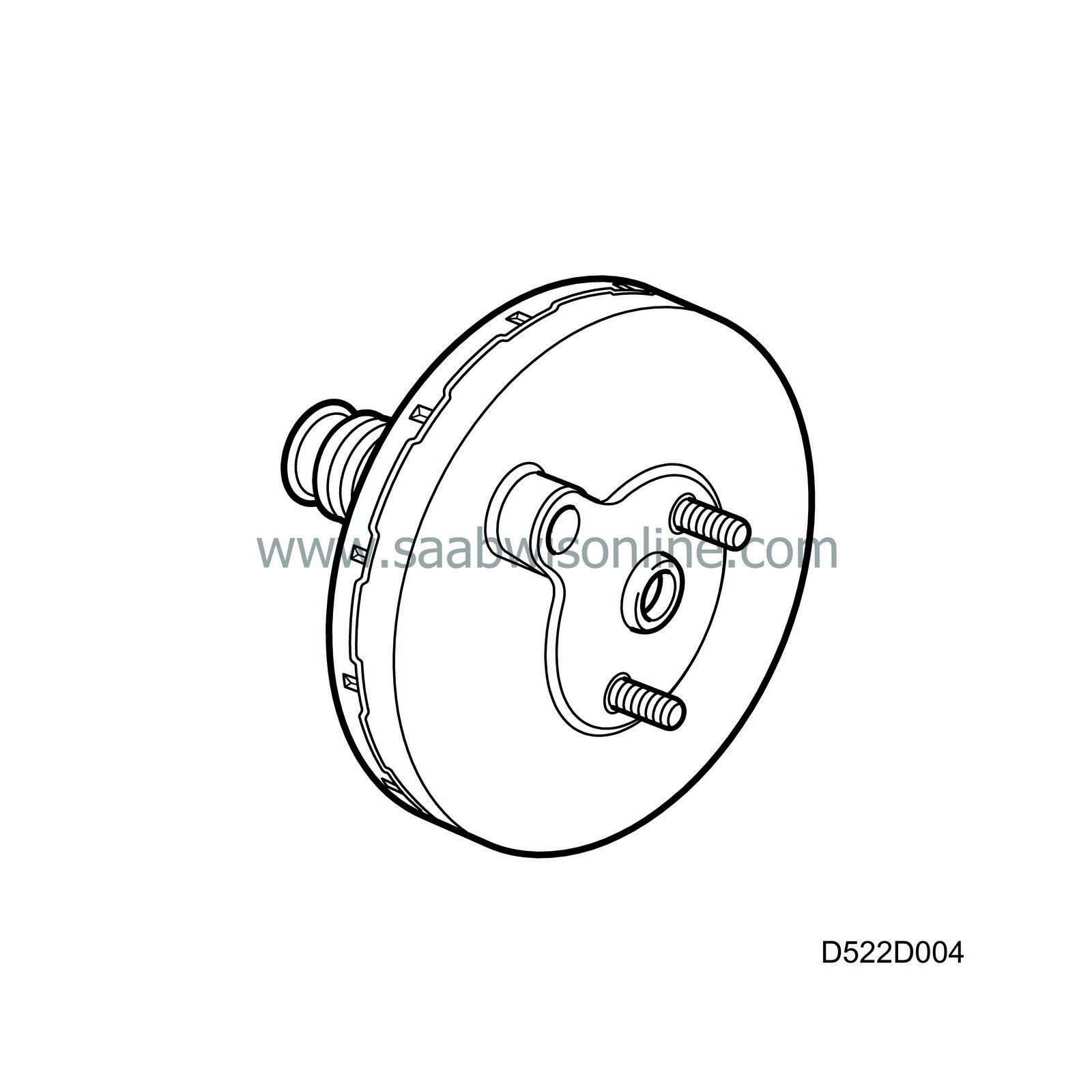Brake servo unit
| Brake servo unit |
In order to provide even greater braking power, some models are fitted with an extra vacuum pump, see
 .
.
Servo unit is connected to the intake manifold via a hose.
The servo unit consists of a metal casing fitted between the brake pedal and the main cylinder, and is connected to these via pushrods. If there is a leak in the servo unit, both the pushrods will act as a single pushrod. The brakes will then function without servo assistance, which means that considerably greater pedal force will be required.
| Rest (brakes off) position |

| 1. |
Diaphragm
|
|
| 2. |
Vacuum passage
|
|
| 3. |
Valve
|
|
| 4. |
Air passage
|
|
| 5. |
Barometric pressure
|
|
| 6. |
Operating chamber
|
|
| 7. |
Vacuum chamber
|
|
| 8. |
Return spring
|
|
| 9. |
Non-return valve
|
|
In rest position, the air passage (4) is closed and the vacuum chamber (7) is connected to the operating chamber (6) via the valve (3). Equal vacuum is present in both sides of the diaphragm (1) in rest position.
| Brake applied |

| 1. |
Diaphragm
|
|
| 2. |
Vacuum passage
|
|
| 3. |
Valve
|
|
| 4. |
Air passage
|
|
| 5. |
Barometric pressure
|
|
| 6. |
Operating chamber
|
|
| 7. |
Vacuum chamber
|
|
| 8. |
Return spring
|
|
| 9. |
Non-return valve
|
|
When the brake pedal is depressed, the pushrod presses forward the valve plunger and diaphragm (1), whereby the vacuum passage is closed. When the pushrod presses further, the valve plunger opens a passage (4), which allows air at barometric pressure (5) to flow through the filter and behind the diaphragm.
As the vacuum from the intake manifold acts in front of the diaphragm, the pressure difference makes the diaphragm (1) and pushrod to the master cylinder move forward, whereby the force on the pedal is amplified.
When the force on the pedal has ceased, the vacuum valve is opened and air at barometric pressure on the back of the diaphragm is allowed to flow over to the front and from there through the non-return valve (9) to the intake manifold. The opening for the atmospheric air closes and the return spring presses the diaphragm, valve plunger and pushrod from the brake pedal back to their rest positions. The non-return valve prevents air at barometric pressure from flowing back from the intake manifold to the servo unit. It opens only when the vacuum in the intake manifold is greater than that in the servo unit.



